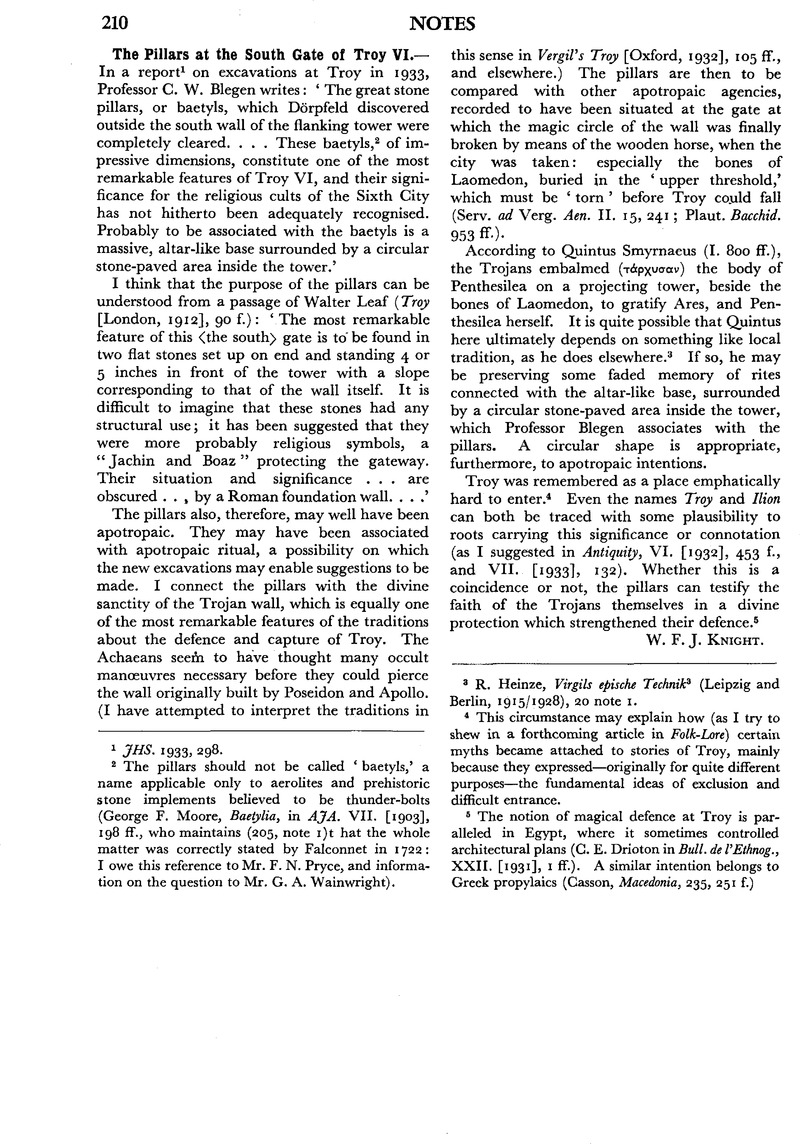No CrossRef data available.
Published online by Cambridge University Press: 23 December 2013

1 JHS. 1933, 298Google Scholar.
2 The pillars should not be called ‘baetyls,’ a name applicable only to aerolites and prehistoric stone implements believed to be thunder-bolts (Moore, George F., Baetylia, in AJA. VII. [1903], 198 ff.CrossRefGoogle Scholar, who maintains (205, note 1)that the whole matter was correctly stated by Falconnet in 1722: I owe this reference to Mr. F. N. Pryce, and information on the question to Mr. G. A. Wainwright).
3 Heinze, R., Virgils epische Technik3 (Leipzig and Berlin, 1915/1928), 20 note 1Google Scholar.
4 This circumstance may explain how (as I try to shew in a forthcoming article in Folk-Lore) certain myths became attached to stories of Troy, mainly because they expressed—originally for quite different purposes—the fundamental ideas of exclusion and difficult entrance.
5 The notion of magical defence at Troy is paralleled in Egypt, where it sometimes controlled architectural plans (Drioton, G. E. in Bull, de l'Ethnog., XXII. [1931], 1 ff.Google Scholar). A similar intention belongs to Greek propylaics (Casson, , Macedonia, 235, 251 fGoogle Scholar.)